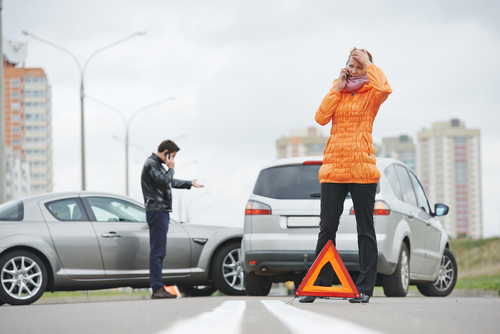What Texas’s 51% Bar Means for Your Car Accident Attorney in Houston
If you’ve been injured in a car accident in Houston, the first question racing through your mind is likely “Can I still recover compensation if I was partially at fault?” The answer lies in understanding Texas’s 51% comparative negligence rule, which could either make or break your claim. Texas hasn’t had a single deathless day on its roadways since November 7, 2000, meaning someone has died in a traffic crash every single day for over 23 years. This sobering reality makes it even more critical to understand how fault is determined and how it affects your ability to recover damages after an accident.
💡 Pro Tip: Document everything at the accident scene, including photos, witness statements, and police reports – even small details about road conditions or traffic signals could shift fault percentages in your favor.
Are you tangled in the web of determining fault after a car accident in Houston? Don’t let the complexities of Texas’s 51% comparative negligence rule hold you back from seeking rightful compensation. At Payne Law Firm, we’re here to clear the fog and help guide you through every step of your case. Reach out to us today at 713-223-5100 or contact us to ensure your voice is heard and your rights protected.

Understanding Texas Proportionate Responsibility in Car Accident Cases
Under the Texas Proportionate Responsibility Law, you cannot recover damages if your percentage of responsibility is greater than 50 percent. This modified comparative negligence system means that if you’re found to be 51% or more at fault for the accident, you receive nothing – not even compensation for medical bills or lost wages. A car accident attorney in Houston can help you understand how this rule applies to your specific situation and work to minimize your assigned percentage of fault. The law also allows defendants to designate responsible third parties whose conduct may have contributed to the harm, even if that party is not joined in the lawsuit, which can significantly impact how fault is distributed.
💡 Pro Tip: Keep detailed records of all communications with insurance companies – statements made during initial calls can be used to assign fault percentages later.
The Process of Determining Fault in Houston Car Accidents
Establishing fault percentages in a car accident case follows a specific timeline and process that can significantly impact your compensation. Working with a car accident attorney in Houston ensures each step is handled properly to protect your rights and minimize your assigned fault. Understanding this process helps you make informed decisions about your case.
Initial Investigation (Days 1-7): Police reports are filed, witness statements collected, and preliminary fault assessments made by responding officers
Insurance Company Review (Weeks 1-4): Insurance adjusters analyze evidence, review damage, and make initial fault determinations
Expert Analysis (Months 1-3): Accident reconstruction specialists may be hired to create detailed analyses of how the crash occurred
Discovery Phase (Months 3-6): Both sides exchange evidence, depositions are taken, and responsible third parties may be designated
Settlement Negotiations (Months 4-8): Parties attempt to agree on fault percentages and compensation amounts
Trial (If needed, Months 9-18): A jury determines exact fault percentages for all parties involved
💡 Pro Tip: Request traffic camera footage immediately – many systems only retain recordings for 30 days, and this evidence can be crucial in proving fault percentages.
How Payne Law Fights to Minimize Your Fault Percentage
At Payne Law, we understand that even a small shift in fault percentage can mean the difference between full compensation and receiving nothing at all. Our car accident attorneys in Houston thoroughly investigate every aspect of your case, from analyzing Texas motor vehicle crash statistics to examining road design flaws that may have contributed to the accident. Fort Bend County experienced 11,549 total crashes in 2023, representing a 10 percent increase from 10,496 crashes in 2022, and we use this local data to demonstrate patterns and common causes that may reduce your assigned fault. We also identify and designate responsible third parties when appropriate, which can spread fault among multiple parties and keep your percentage below the critical 51% threshold.
💡 Pro Tip: Never admit fault at the scene or to insurance adjusters – even saying “I’m sorry” can be misconstrued as an admission of responsibility.
Real-World Examples: How Fault Percentages Impact Your Recovery
Understanding how the 51% bar works in practice helps illustrate why having a car accident attorney in Houston is crucial. Consider a rear-end collision where the trailing driver is typically at fault, but the leading driver had a broken taillight. The trailing driver might be assigned 80% fault while the leading driver bears 20%. If damages total $100,000, the leading driver could recover $80,000. However, if investigation reveals the leading driver also made an illegal lane change, their fault might jump to 55%, eliminating any recovery under Texas law.
Houston’s Dangerous Intersections and Shared Fault
More than 320 people died on Houston streets in 2022, with nearly 1,600 more seriously injured. Many of these accidents occurred at complex intersections where multiple parties share fault. Vision Zero-aligned safety improvements on specific corridors resulted in a 26% decrease in annual crashes with injuries, demonstrating how road design can impact fault determinations. When accidents occur in areas known for poor design or inadequate signage, your car accident attorney in Houston can argue that governmental entities or contractors share responsibility, reducing your fault percentage.
💡 Pro Tip: Research whether your accident location has a history of crashes – patterns of accidents can indicate design flaws that shift fault away from drivers.
The Critical Role of Evidence in Fault Determination
Evidence quality often determines whether you fall above or below the 51% fault threshold. Physical evidence like skid marks, vehicle damage patterns, and debris fields tell a story about how the accident unfolded. Electronic data from vehicle computers, cell phone records, and surveillance footage provide objective proof that can counter subjective witness accounts. The Texas Proportionate Responsibility Law requires clear evidence to establish each party’s percentage of fault, making thorough documentation essential from the moment of impact.
Technology’s Impact on Proving Fault
Modern vehicles equipped with event data recorders (EDRs) capture crucial seconds before impact, including speed, brake application, and steering input. This data can definitively prove whether a driver was speeding or failed to brake in time. Additionally, Houston’s expanding network of traffic cameras and private security systems often capture accidents from multiple angles. Your car accident attorney in Houston should immediately request preservation of all electronic evidence before it’s overwritten or deleted.
💡 Pro Tip: Check if your vehicle or phone has any apps that track driving behavior – this data can prove you were driving safely before the accident.
Special Considerations for Pedestrian and Motorcycle Accidents
The 51% rule applies differently in cases involving vulnerable road users. Pedestrian fatalities in Houston increased by 9 from 2021 to 2022, reaching a total of 115 deaths, often because pedestrians are unfairly assigned high fault percentages. However, Texas motor vehicle crash statistics show that drivers frequently violate pedestrian right-of-way, and a skilled car accident attorney in Houston can demonstrate how driver negligence was the primary cause. Notably, no fatalities occurred among people using protected bike lanes in Houston during 2022, proving that proper infrastructure significantly impacts fault distribution in accidents.
Challenging Bias Against Motorcyclists
Motorcycle fatalities in Texas increased from 562 in 2022 to 595 in 2023, with 244 motorcyclists who died not wearing helmets. Insurance companies often try to assign excessive fault to motorcyclists based on stereotypes rather than facts. However, most motorcycle accidents result from other drivers failing to yield right-of-way or changing lanes without checking blind spots. Comprehensive investigation often reveals the motorcyclist’s fault percentage should be minimal or zero.
💡 Pro Tip: If you’re a pedestrian or motorcyclist in an accident, photograph your visibility aids (reflective clothing, lights) to counter claims you were hard to see.
Frequently Asked Questions
Common Legal Concerns About the 51% Rule
Understanding how Texas’s comparative negligence law affects your case raises many questions. These answers address the most common concerns we hear from accident victims.
💡 Pro Tip: Write down all your questions before meeting with an attorney – addressing concerns early helps you make informed decisions about your case.
Next Steps After a Houston Car Accident
Knowing what to do immediately after an accident can significantly impact your ability to recover compensation, especially when fault is disputed.
💡 Pro Tip: Create a post-accident checklist and keep it in your glove compartment – being prepared helps protect your rights when you’re shaken up after a crash.
1. What happens if I’m found to be exactly 50% at fault for my car accident in Houston?
If you’re found to be exactly 50% at fault, you can still recover compensation under Texas law, but your damages will be reduced by half. For example, if your total damages are $100,000 and you’re 50% at fault, you would receive $50,000. This is why fighting to keep your fault percentage at or below 50% is crucial – just one percentage point higher means you receive nothing.
2. Can my fault percentage change after initially being determined by insurance companies?
Yes, initial fault determinations by insurance companies are not final. New evidence, witness testimony, or expert analysis can shift fault percentages significantly. A car accident attorney in Houston can investigate further, hire experts, and present evidence that reduces your assigned fault. Many cases see dramatic shifts in fault percentages between initial insurance assessments and final jury verdicts.
3. How do multiple at-fault parties affect my recovery under the 51% rule?
When multiple parties share fault, Texas law allows defendants to designate responsible third parties, even if they’re not part of the lawsuit. This can work in your favor by spreading fault among more parties, potentially keeping your percentage below 51%. For instance, if you’re 30% at fault, another driver is 50% at fault, and a third party (like a construction company that created hazardous conditions) is 20% at fault, you can still recover 70% of your damages.
4. What evidence is most important in fighting a high fault percentage determination?
Physical evidence like photos, videos, and electronic data from vehicles typically carries the most weight. Police reports, while important, can be challenged if they conflict with physical evidence. Expert testimony from accident reconstructionists can be crucial in complex cases. Witness statements help but may be less reliable than objective evidence. The key is collecting as much evidence as possible immediately after the accident.
5. Does Texas’s 51% rule apply to all types of car accident claims?
The 51% comparative negligence rule applies to most car accident claims in Texas, including those involving multiple vehicles, pedestrians, bicyclists, and motorcycles. It covers claims for personal injury, property damage, and wrongful death. However, certain claims like those against governmental entities may have additional requirements or limitations. Your car accident attorney in Houston can explain how the rule applies to your specific situation.
Work with a Trusted Car Accidents Lawyer
Understanding and navigating Texas’s 51% comparative negligence rule requires extensive knowledge of state law, local court precedents, and effective negotiation strategies. The difference between being assigned 49% fault versus 51% fault could mean the difference between receiving substantial compensation and receiving nothing at all. With Houston experiencing 271 traffic deaths in 2023 and thousands more injuries, having skilled legal representation has never been more important. An experienced attorney knows how to investigate thoroughly, present evidence effectively, and fight against unfair fault assignments that could bar your recovery.
When life puts you on a bumpy road, don’t navigate it alone. At Payne Law Firm, we’re ready to stand by your side and help you understand Texas’s 51% rule and what it means for your future. Give us a shout at 713-223-5100 or contact us today, and let us work toward the justice you deserve.


